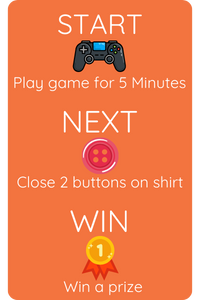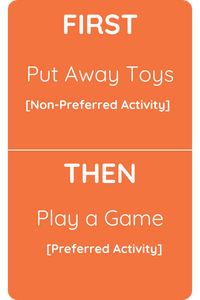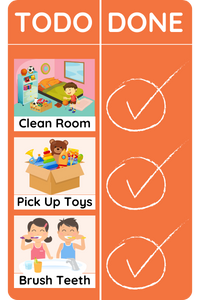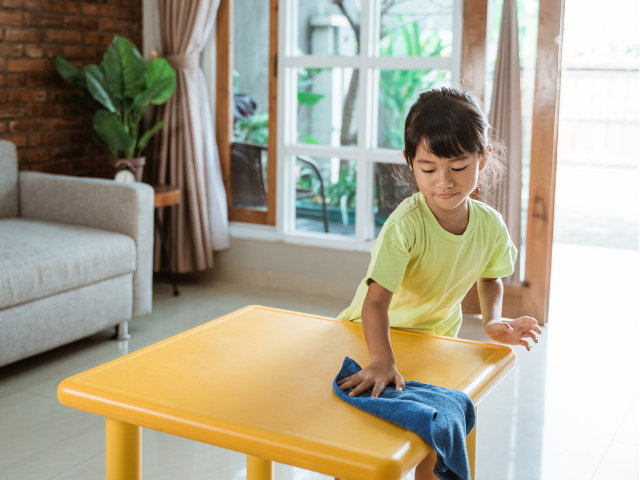Transition activities for preschoolers can help your young one end one activity and shift to a new activity. Behavior expert Rehan Mairajuddin describes several techniques to help your child with these transitions.
Introduction to Transition Activities for Preschoolers
You are watching your favorite TV show, and in the middle of it all, your child asks you to make mac & cheese for her. Would you find that exciting? Would you rush to turn off your show, start the stove, and make it from scratch?
You meet your old friend from high school at a cafe. You engage in heartfelt conversations of the good old days. You’re eager to learn about what’s new with her, and she’s excited to know how things are with you. You are enjoying yourself and lose all sense of time. Suddenly, the staff at the café inform you that they are closing as they start turning the lights off. Would you be eager to end your conversation to make your way home to all the responsibilities that await your attention?
Transitions from an enjoyable activity to a less preferred occasion are difficult for us. Depending on the quality of the preferred activity, these transitions can feel very tough. However, these transitions are far more challenging for our little explorers as they have no learned experience to refer back to. Kiddos are constantly learning as they grow. They can either 1.) Develop and maintain behaviors that get in the way of learning new things but get them what they want, or 2.) They acquire, maintain, and generalize behaviors that can help them self-manage and grow in social understanding. It is up to us to set the stage for their success in life.
How do we best go about this? There are many simple-to-use techniques. However, before you use any of the strategies described here, remember that your precious young learner is a full-fledged human being. Therefore, the strategies you implement need to suit your child’s needs and preferences to be effective. So, what are some of these techniques?
Techniques for Transition Activities for Preschoolers
Knowing What’s Happening and What’s in It for Me
When I am about to do anything, I feel that knowing what is happening and why I will be doing something is especially important for me. I need to feel comfortable to meet the challenges of moving on from something I like to something else I don’t like as much.
Likewise, our kiddos need this information. They need to have some sense of predictability and comprehension of the goings-on. It is vital that we clearly and without using too many words, communicate to our kiddos, the expectations we have. So, to get to the meat of the discussion, how do we do this?
I suggest playing a game. A game that has a clear beginning and a clear end with a prize to be had. You could start by asking your child what they want to win today. Alternatively, you could present your child with two to three options on what they could win. Keep in mind these choices have to be both relevant and preferred by your child.
Transition Technique: The Game
Making visual cards is an excellent idea if you or your child prefer visuals. However, you can do without these visuals, if the visual aspect of play makes no difference to you or your child. Select the number of turns your kiddo has to engage in. Each turn will involve two activities. At the start of the game, let your kiddo know the number of turns they have and that each turn involves two different things they will have to complete.
Like video games, there are levels to this game. At the 1st level, your kiddo gets rewarded after each turn (2 activities). At level 2, your kiddo gets the reward after two turns (4 activities). The levels need to be adjusted according to your child’s tolerance level. It is very important to maintain the “buy-in” from your child. As you can imagine, you can start from a higher level and keep adjusting the level according to your child’s tolerance and engagement.
In the beginning, it is essential to make the game easy and demonstrate how it is played. You can do this by having your child engage in one preferred activity and then move on to another equally preferred activity.
In the interest of providing a simple example, below is what a visual card for level 1 might look like. Remember, that this would have to be individualized for your child depending on what is both relevant and preferred by your child.

Transition Technique: Share the Control
You want to make sure that you give your child a choice. Choice is essential to feel like we have control over our lives. You can have your child choose their preferred activity, then have them place that activity icon/written in the then portion of a first-then board [download template]. After that, you have them pick between 2-3 non-preferred activities. Once they select, have that activity placed into the first portion of the first-then board.

Transition Technique: Social Stories
If your child enjoys being read to or loves to read by themselves, then social stories would be a great way to help understand their difficulties with transitioning from preferred to non-preferred activities. There are many social stories about transition difficulties available online. My favorite way to implement this technique is to make an individualized story for the particular kiddo. The social stories technique works best to incorporate your child into the story and model how they could get through a tough transition. Fun illustrations, along with your child’s picture(s) and of others from their lives, are a really good way to get their focus on the subject matter.
Transition Technique: Schedules & Timers
Schedules and timers are an excellent idea for any age group. If you or your child are visual people, you can make this fun. The key to schedules is making sure your child has ownership of it. Ownership here refers to them putting things onto the schedule and removing them once complete (with your support and under your supervision). You can incorporate timers into schedules, or you can use timers and schedules separately.
Schedules you could use much like the 1st-then boards. Timers you can use to set limits. There are visual timers available in the market. The key to using schedules or timers will be consistency & reward following compliance.
My favorite types of visual schedules are those that have both the “to do” & “done” columns. Below is a simple example of such a schedule, which uses Velcro and simple image icons. A helpful hint for making schedules successful is to give supervised control (i.e., have your child place the icons on the schedule and give your child choices of what can go on the schedule).

Self-Management Skills
Self-management skills are essential. It is fantastically helpful when your child can recognize and express themselves appropriately. One way to get them to recognize this is by turning this into a game. It’s really up to your imagination on how you may wish to set the game up. The important thing here is for you and your child to have fun.
One suggestion is to make a card game. You could make your own picture cards or purchase picture cards. Take turns with your child while playing this game. Pick a card, identify the emotion, and at least one way to manage the feeling in a socially appropriate and acceptable way. If your child has difficulty identifying the emotion pictured, have two choices written on the card and help them identify it correctly that way. If need be, you may do the same for strategies for managing emotions.
Getting Additional Help
Should you need any help with getting started or troubleshooting any of these strategies or need other suggestions, we at Vitalxchange are here for you. Book a 1:1 Session with one of our behavior specialists to get personalized suggestions. Vitalxchange also provides subscription packages that include your own VitalGuide, a parenting assistant to help guide you to appropriate specialists and provide you with activities to work on areas where your child needs the most assistance.




